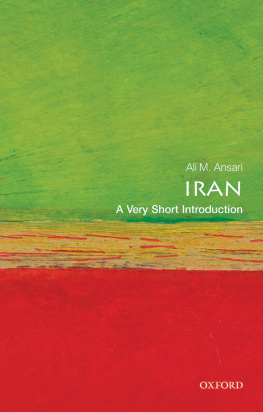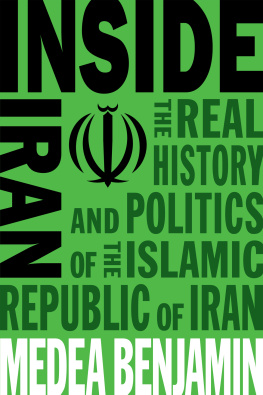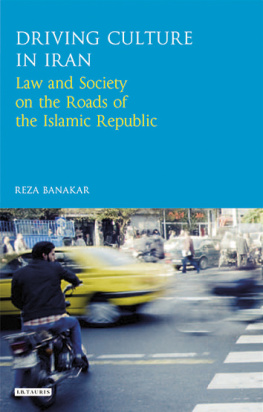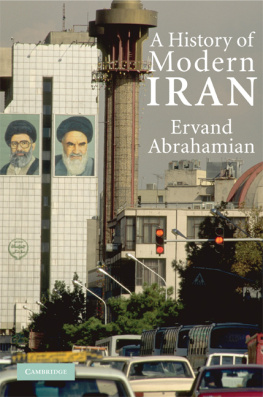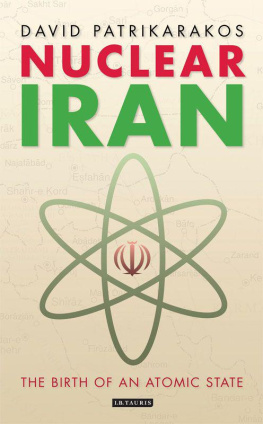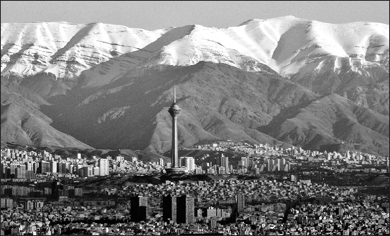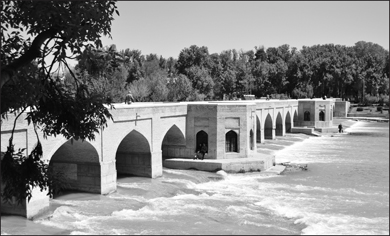This book is for my mum and dad, with love and gratitude.
STUART WILLIAMS is a British journalist specializing in the Middle East, Russia, and Turkey. A graduate in German and Russian from Worcester College, Oxford, he has worked for international news agency Agence France-Presse (AFP) in several countries, including long-term postings living in Iran, Russia, and Turkey, covering protests, conflict, and post-imperial societies. Stuart first traveled around Iran as a tourist after leaving university and was immediately entranced by a country that appeared so different from its image abroad. He worked for two full years in Tehran as one of very few foreign reporters based inside Iran, an experience that did not diminish his enthusiasm. He is now based in Istanbul.
Further Reading
de Bellaigue, Christopher. In the Rose Garden of Martyrs: A Memoir of Iran. London: Harper Perennial, 2005.
Byron, Robert. The Road to Oxiana. London: Penguin, 2007.
Curtis, John. Ancient Persia. London: British Museum Press, 2000.
Digard, Jean-Pierre, and Bernard Hourcade and Yann Richard. LIran au XXe sicle. Paris: Fayard, 2007.
Ebadi, Shirin. Iran Awakening. London: Rider, 2007.
Farzad, Narguess. Modern Persian. London: Hodder Headline, 2004.
Firouz, Eskander. The Complete Fauna of Iran. London: I. B. Tauris, 2005.
Gheissari, Ali, and Vali Nasr, Democracy in Iran. History and the Quest for Liberty. Oxford: Oxford University Press, 2006.
Issa, Rose, and Sheila Whitaker (eds). Life and Art. The New Iranian Cinema.
National Film Theatre/British Film Institute: London, 1999.
Keddie, Nikki R. Modern Iran. New Haven, Conn.: Yale, 2006.
Kinzer, Stephen. All The Shahs Men. Hoboken, N.J.: Wiley, 2003.
Mottahedeh, Roy. The Mantle of the Prophet. Oxford: One World, 2000.
Naipul, V. S. Beyond Belief. London: Little Brown, 1998.
Nasr, Vali. The Shia Revival: How Conflicts Within Islam Will Shape the Future. London: W. W. Norton, 2006.
Sadr, Hamid Reza. Iranian Cinema, A Political History. London: I. B. Tauris, 2006.
Shaida, Margaret. The Legendary Cuisine of Persia. London: Grub Street, 2000.
Thackston, Wheeler M. An Introduction to Persian. Bethsheda, Md.: Ibex, 1993.
Useful Web Sites
http://www.IranianVisa.com
Visa information and services for Iran
http://www.IranianTours.com
A variety of group and individual tours in Iran
http://www.IranHotelInfo.com
Iran hotel information and bookings
http://www.IranTravelInsurance.com
Iran travel insurance services
http://www.IranBC.com
Iran Business Centre
LAND & PEOPLE |  | chapter one |
GEOGRAPHY AND CLIMATE
Straddling the frontiers of Europe and South and Central Asia, Iran encompasses a huge diversity of cultures and landscapes. It has western borders with Turkey, possibly a future European Union member. To the northwest lie the former Soviet republics of Armenia and Azerbaijan. There is a northern border with the reclusive former Soviet republic of Turkmenistan and then the Caspian Sea, a major economic asset. When the Soviet Union collapsed in the 1990s, Iran found the number of its northern neighbors had tripled.
To the west, its neighbor is one-time foe and now close ally Iraq. Further south are the sultry waters of the Persian Gulf, across which lies the Arabian Peninsula. To the east, Iran borders desert regions of Pakistan and further north conflict-torn Afghanistan.
As a result of this extraordinary geographic position, it is sometimes hard to define Iranian culture. On occasion it appears very eastern and even mystical, while at others historic links to Europe and the West are more evident than elsewhere in the region. Regional influences and minority groups have also left substantial traces.
Climate
Irans weather is one of its greatest assets, and it is sorely missed by the millions who now live in the diaspora. Iranians will proudly tell you how it is possible on the same day to be sweltering by the Persian Gulf while a friend is battling below freezing temperatures climbing a mountain in the north. The weather varies greatly from region to region throughout the year. Iran chahar fasl-e! (Iran has four seasons!) is a proud and often-repeated refrain. And it is true, the weather is spectacular: normally sunny, with short but intense periods of rain or snow.
The capital Tehran has the full kaleidoscope of weatherheavy snowfalls in the winter (starting in December) usually cause chaos in the city center but delight skiing fans who flock to several resorts within a short drive north of the city.
Spring breaks around March with occasional but heavy showers. True summer starts in May, with temperatures kept bearable in Tehran and several other cities by their high altitude. Fall is a long and beautiful season in the capital with stable, sunny weather often lasting into November. In the winter months temperatures can plunge to 4F (20C) in the north of Iran, and even in central Tehran prolonged periods below freezing are common. By contrast, the temperature in Tehran can rise over 86F (30C) in summer; on the humid littoral cities of the Persian Gulf temperatures in excess of 104F (40C) are common in summer.
Landscape
The landscape of Iran is of breathtaking diversity. The northern provinces bordering the Caspian Sea are relatively lush areas with high precipitation that burst into bloom in springtime. In contrast two deserts make up around one-third of the country. The massive Dasht-e Kavir that starts east of Tehran and the Dasht-e Lut that heads toward the Pakistan border are areas with sand dunes and endless scrubland that may seem more familiar in Arab and African countries. As well as these deserts, there are also great mountain ranges. The Alborz Mountains that rise high above Tehran include Irans highest peak, Mount Damavand, an extinct volcano rising to 18,606 feet (5,671 m), whose huge cone is one of the countrys iconic images. Extending down the countrys western edge like a massive spine is the long Zagros range, the other main chain of mountains.


